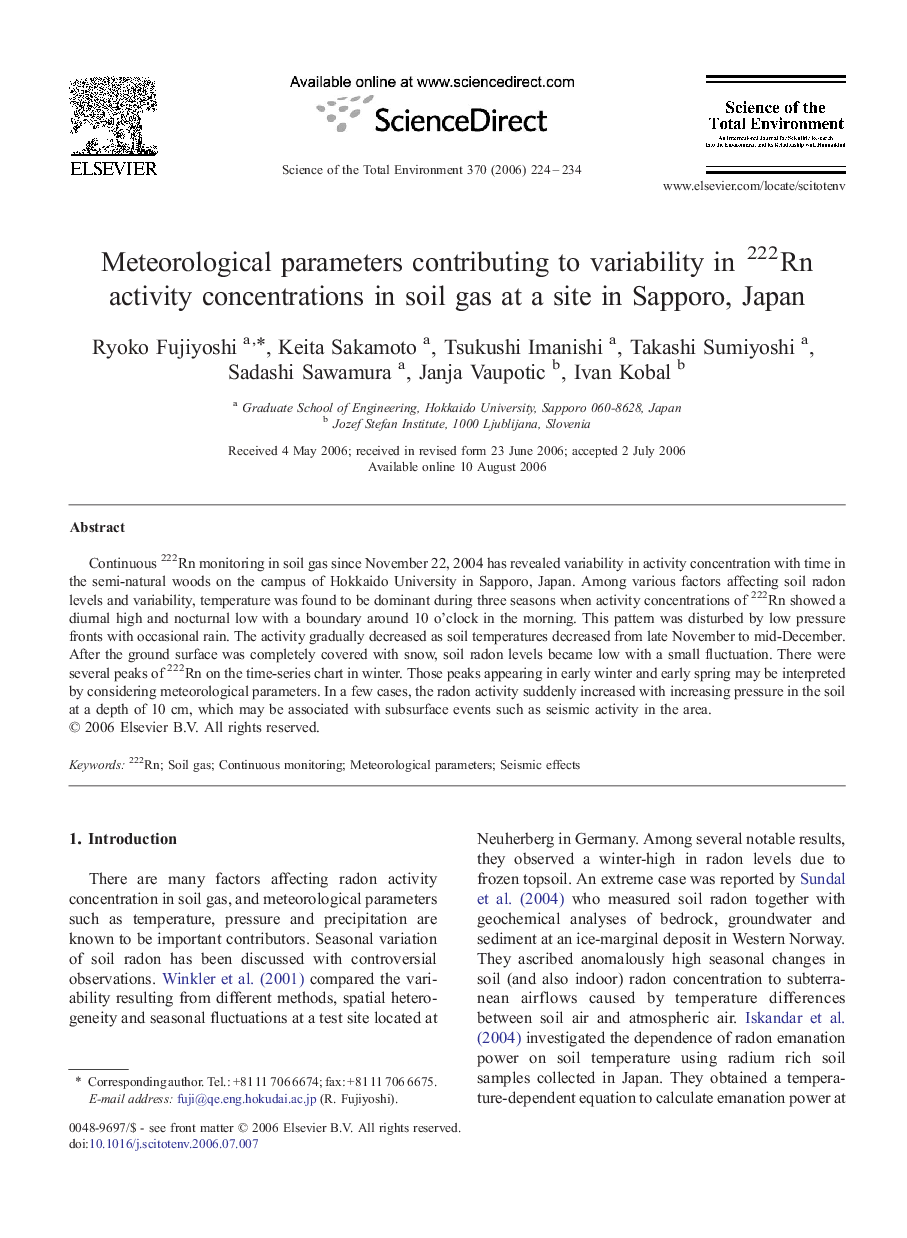| Article ID | Journal | Published Year | Pages | File Type |
|---|---|---|---|---|
| 4433798 | Science of The Total Environment | 2006 | 11 Pages |
Continuous 222Rn monitoring in soil gas since November 22, 2004 has revealed variability in activity concentration with time in the semi-natural woods on the campus of Hokkaido University in Sapporo, Japan. Among various factors affecting soil radon levels and variability, temperature was found to be dominant during three seasons when activity concentrations of 222Rn showed a diurnal high and nocturnal low with a boundary around 10 o'clock in the morning. This pattern was disturbed by low pressure fronts with occasional rain. The activity gradually decreased as soil temperatures decreased from late November to mid-December. After the ground surface was completely covered with snow, soil radon levels became low with a small fluctuation. There were several peaks of 222Rn on the time-series chart in winter. Those peaks appearing in early winter and early spring may be interpreted by considering meteorological parameters. In a few cases, the radon activity suddenly increased with increasing pressure in the soil at a depth of 10 cm, which may be associated with subsurface events such as seismic activity in the area.
